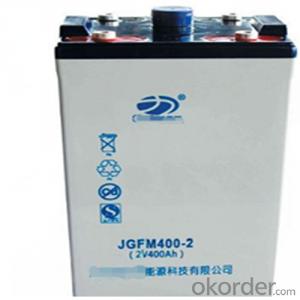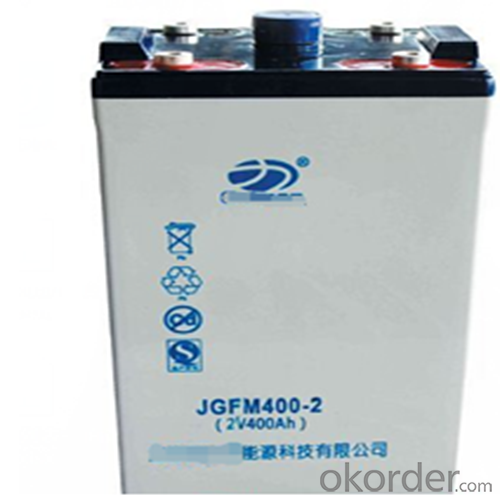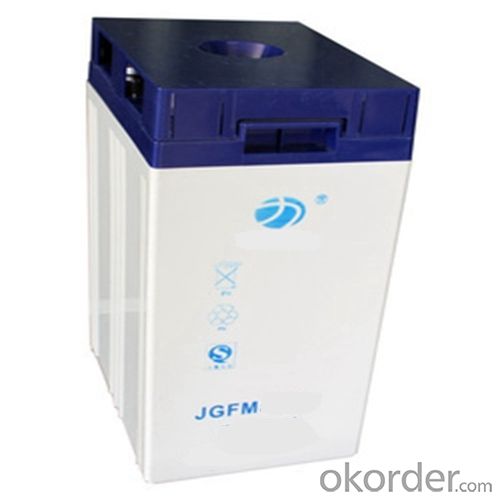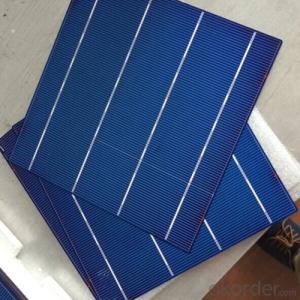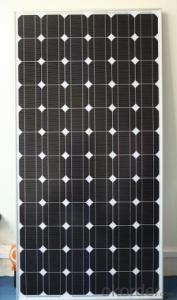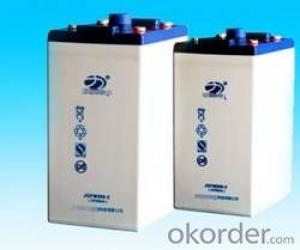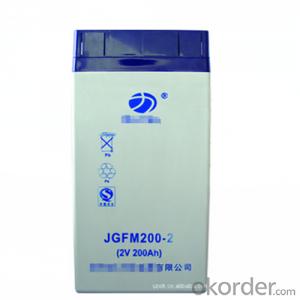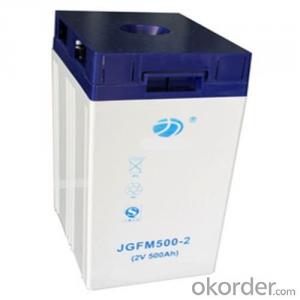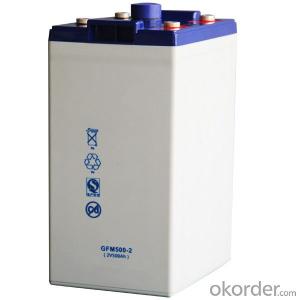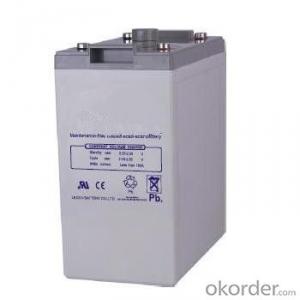Zombie Solar Cells Colloid Storage Battery JGFM Series 2V 400AH
- Loading Port:
- China main port
- Payment Terms:
- TT OR LC
- Min Order Qty:
- 1 pc
- Supply Capability:
- 300000 pc/month
OKorder Service Pledge
OKorder Financial Service
You Might Also Like
Structure of Product Descrtiption
What is the product?
· Precision explosion relief valve shall be adopted
· Advanced wrapping technology and assembly technology
· Designed life is fifteen years,excellent performance of battery in low temperature and superiority in consistence and stability
· Can be used at vertical or horizontal orientation
· Balanced design for both floating and cyclic operation
· Low self-discharge rate and long shelf life
· Connecting terminal adopts stainless steel bolt,thus it has the characteristics of high strength and non-deforming
· Design with patented corrosion resisting alloy and thickened plate
What is the purpose of the product?
· Data Centre (High Rate UPS)
· Telecommunication
· Banks & Financial Centre
· Hospital& Testing Laboratories
· Power Generation Plants
· High Power Backup Supply
· Design with patented corrosion resisting alloy and thickened plate
What advantages do products have ?
· Stable quality&high reliability
· Sealed construction
· Environmentally friendly
· Maintenance-free operation
· Low pressure venting system
· Heavy duty grid
· Low self discharge
Main feature of the product:
*safety and reliable
*environmental friendly and fast delivery
*low self diacharge
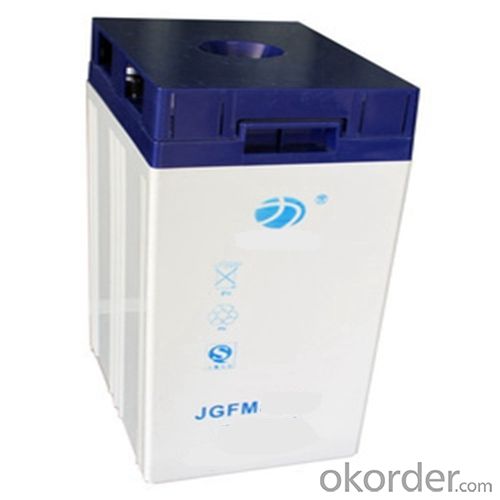
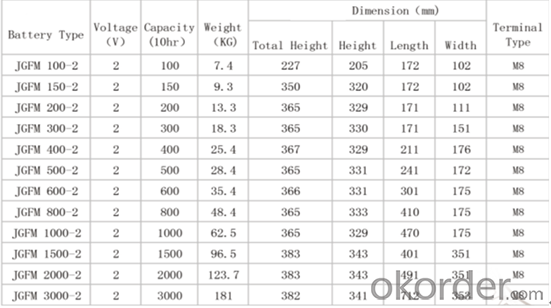
FAQ:
1. What’s price per watt?
A: It’s depends on the quantity, delivery date and payment terms of the order. We can talk further about the detail price issue. Our products is high quality with lower price level.
2. What payment do you have?
We have CIF,FOB,DDU,DDP,CFR so and .It all depends.
3. How do you pack your products?
We have rich experience on how to pack the panels to make sure the safety on shipment when it arrives at the destination.
- Q: How do people price solar cells? Is it based on a specific way of calculating the cost of solar cells?
- The solar cells price is high, because it will take at least 8 years to recover the cost of a the solar cell power supply system.
- Q: Where can I buy the 156x156mm high efficiency poly solar cells assembly?
- 156x156mm high efficiency poly solar cells assembly is usually very easy to get, all you need to do is to post your need online, and the suppliers will come to you.
- Q: Are solar cells affected by temperature?
- Yes, solar cells are affected by temperature. High temperatures can cause a decrease in the efficiency of solar cells, resulting in a reduction in their power output. However, modern solar cell technologies have been developed to minimize the impact of temperature on their performance.
- Q: Can solar cells be used in boats or marine applications?
- Yes, solar cells can be used in boats or marine applications. Solar panels can be installed on boats to generate electricity by harnessing the power of the sun. This renewable energy source can be used to power various systems onboard such as navigation equipment, lighting, communication devices, and even charging batteries. Solar cells are a sustainable and efficient solution for boats and marine applications as they provide a clean and quiet source of power, reducing the reliance on fossil fuels and minimizing environmental impact.
- Q: How do solar cells perform in regions with high levels of humidity and rainfall?
- Solar cells can still perform well in regions with high levels of humidity and rainfall. While humidity may slightly decrease the efficiency of solar cells, modern designs and materials are developed to withstand these conditions. Additionally, rainfall can actually be beneficial as it helps to clean the solar panels, removing dust and dirt that may accumulate on the surface. Overall, solar cells can still generate electricity effectively in regions with high humidity and rainfall, although their performance may be slightly affected.
- Q: Can solar cells be used in recreational vehicles or boats?
- Yes, solar cells can be used in recreational vehicles or boats. They provide a reliable and eco-friendly source of power for charging batteries and running various appliances on board. Solar panels can be easily mounted on the roof of the vehicle or boat to harness sunlight and convert it into electricity, making them an ideal solution for off-grid power needs while enjoying outdoor activities.
- Q: Can solar cells be used for powering navigation buoys?
- Yes, solar cells can be used for powering navigation buoys. Solar cells are an environmentally friendly and reliable source of renewable energy that can efficiently convert sunlight into electricity. By harnessing solar power, navigation buoys can operate independently without the need for traditional power sources like batteries or grid connections. This makes solar cells a cost-effective and sustainable solution for powering navigation buoys in remote or offshore locations.
- Q: Can solar cells be used in hotels?
- Yes, solar cells can definitely be used in hotels. Solar panels can be installed on the rooftops or surrounding areas of hotels to harness solar energy and generate electricity. This renewable energy source can help hotels reduce their reliance on traditional power grids, lower their carbon footprint, and save on electricity costs in the long run. Additionally, hotels can also utilize solar power for heating water, lighting outdoor spaces, or charging electric vehicles, further enhancing their sustainability initiatives.
- Q: Can solar cells store energy for later use?
- No, solar cells cannot store energy for later use as they directly convert sunlight into electricity when exposed to sunlight. However, the electricity generated by solar cells can be stored in batteries or other energy storage systems for later use.
- Q: Can solar cells be used in space stations?
- Yes, solar cells can be used in space stations. In fact, solar cells are commonly used in space stations to generate electricity by harnessing the energy from the sun. These solar cells are often integrated into the outer surface of the station to maximize sunlight exposure and provide a reliable source of power for various systems and equipment on board.
Send your message to us
Zombie Solar Cells Colloid Storage Battery JGFM Series 2V 400AH
- Loading Port:
- China main port
- Payment Terms:
- TT OR LC
- Min Order Qty:
- 1 pc
- Supply Capability:
- 300000 pc/month
OKorder Service Pledge
OKorder Financial Service
Similar products
Hot products
Hot Searches
Related keywords
